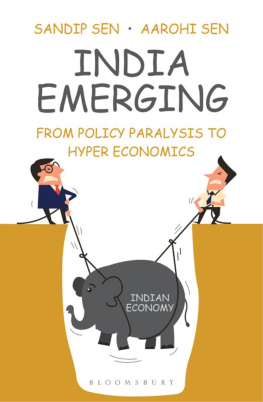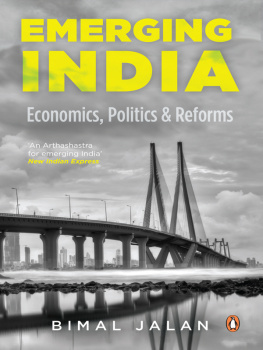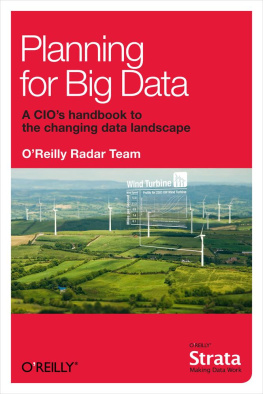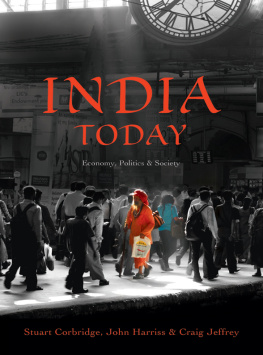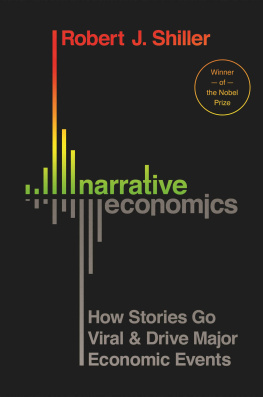Table of Contents

INDIA EMERGING
FROM POLICY PARALYSIS TO
HYPER ECONOMICS
INDIA
EMERGING
FROM POLICY PARALYSIS TO
HYPER ECONOMICS
Sandip Sen and Aarohi Sen

BLOOMSBURY INDIA
Bloomsbury Publishing India Pvt. Ltd
Second Floor, LSC Building No. 4, DDA Complex, Pocket C 6 & 7,
Vasant Kunj New Delhi 110070
BLOOMSBURY, BLOOMSBURY INDIA and the Diana logo are trademarks of
Bloomsbury Publishing Plc
First published in India 2019
This edition published 2019
Copyright Sandip Sen and Aarohi Sen 2019
Sandip Sen and Aarohi Sen have asserted their right under the Indian Copyright Act to be identified as the Author(s) of this work
All rights reserved. No part of this publication may be reproduced or transmitted in any form or by any means, electronic or mechanical, including photocopying, recording or any information storage or retrieval system, without the prior permission in writing from the publishers
Bloomsbury Publishing Plc does not have any control over, or responsibility for, any third-party websites referred to or in this book. All internet addresses given in this book were correct at the time of going to press. The author and publisher regret any inconvenience caused if addresses have changed or sites have ceased to exist, but can accept no responsibility for any such changes
ISBN: TPB: 978-9-3874-5772-0; eBook: 978-9-3874-5794-2
2 4 6 8 10 9 7 5 3 1
Created by Manipal Digital Systems.
Bloomsbury Publishing Plc makes every effort to ensure that the papers used in the manufacture of our books are natural, recyclable products made from wood grown in well-managed forests. Our manufacturing processes conform to the environmental regulations of the country of origin
To find out more about our authors and books visit www.bloomsbury.com and sign up for our newsletters
This book is dedicated to a new India that is efficient, compassionate, sustainable and free from doles and corruption.
CONTENTS
I thank my parents, late Indira and Ajoy Sen, for guiding me through my formative years. Especially my father whose grit, determination and never-say-die attitude perhaps rubbed off a little on me. I am thankful to my wife Suparna, my son Aarohi and my daughter-in-law Priyanka, my sisters Papri Sri Raman and Arundhaty Nayar, and my brother-in-law Raj Nayar for consistently supporting me as I navigate the world of journalism and authorship. I also thank my brother-in-law late J. Sri Raman for introducing me to the world of journalism a few decades ago.
I thank my son Aarohi for co-authoring India Emerging: From Policy Paralysis to Hyper Economics and giving valuable inputs. He has also been instrumental in using his analytical skills for creating charts and graphs used in the book. I also thank my sister Papri for painstakingly editing the draft before submission to the publisher and also for giving several inputs that enriched the manuscript. I also thank my friends, colleagues and batchmates at school, college and fellow Indian Institute of Technology (IIT) alumni for encouraging me and providing me with extensive industry information.
I thank the publisher and the editors at Bloomsbury Publishing who have edited and published the book. I also thank editors of several publications like Business Standard, DNA India, Down to Earth, The Economic Times, Financial Express, Hindustan Times, The Hindu Business Line, The Indian Express, Indian Printer and Publisher, Observer Research Foundation, Pragati, TerraGreen, The Times of India and Womans Era, among others, for having published my writings.
I also thank dozens of friends and well-wishers who gave me valuable insights and information to research and write India Emerging.
Sandip Sen
I owe the opportunity to write this book to my father and mentor, Sandip Sen. I may not share his relentless positivity and unshakeable grit, but I continue to be awed by it. Thank you, Dad!
Aarohi Sen
I ndia Emerging: From Policy Paralysis to Hyper Economics is a story of our timesa story of developmental politics. It is a story of how India is changing and learning through its mistakes. It is a story of successes and failures. It is a story of an economic revival in bits and pieces. It is a story of risks taken without astute risk management. Some of those have succeeded, some backfired.
India Emerging is a sequel to my first book in the series, Neta, Babu and Subsidy: Economic Roundup2000 to 2014, which was published in February 2014. It was an effort to show the economic decision-making during UPA (United Progressive Alliance) I and UPA II and measure the performance against the economic data during the Vajpayee era.
This book is an attempt to documentagainst data from the pastthe economic decision-making during the four years of the National Democratic Alliance (NDA) government led by Prime Minister (PM) Narendra Modi. Like in the previous book, India Emerging also visually demonstrates the state of various sectors of the economy. But, the story this time is much deeper than what mere graphs or statistics can portraybecause it is a story of change, a story of an emerging nation on a learning curve. A nation that has swung from policy paralysis to hyper economics. A nation that does not always get things right because of lack of knowledge, capital, technology, discipline, systems, structuring, conditioning and many other causes that separate the emerging from matured economies.
All data quoted in the book are from authentic sources in the public domain, including Reserve Bank of India (RBI), International Monetary Fund (IMF), ministry annual reports, public and private institutions and publications of repute. The details and references of data sources used are provided in the bibliography. Whereas all graphs in the book have been plotted by us, the data used for them are taken from the websites of public institutions as mentioned in individual graphs.
The book is also a story of a grassroots leader who tries to grapple with the problems of an emerging economy and bring reforms viewed from his perspective. A perspective that is bold but risky. It is innovative and experimental but not what you can always call prudent. Like all experimental approaches, it succeeds in bits and pieces. Where it succeeds, it disrupts and creates new horizons and endless opportunities. Where it fails, it wastes time and moneyresources India cannot afford to waste. Since it is the taxpayers money at stake, not everyone is amused by his style of operation and decision-making.
PM Modi has lent a new experimental approach to modern-day democratic politics. You can call it risky, but it is how and why entrepreneurs succeed or fail. Once selected to lead the Bharatiya Janata Party (BJP), he ensured that its election campaign was aggressively positioned as the vote for Modi sarkar and not the NDA sarkar. It was risky because it only motivated the opposition parties to attack him personally. The Congress positioned its campaign against Modinot against the NDA. It tried to paint him as a dictator who is communal and megalomaniac. He did not respond to Congress jibes on the Godhra riots. Like a man on a mission, he just kept on selling his dreamthe Gujarat model of good governanceduring the election campaign.
Surprisingly, he did not even share his concerns with the people of India about the distraught state of the economy. Rather, he needlessly made claims of

